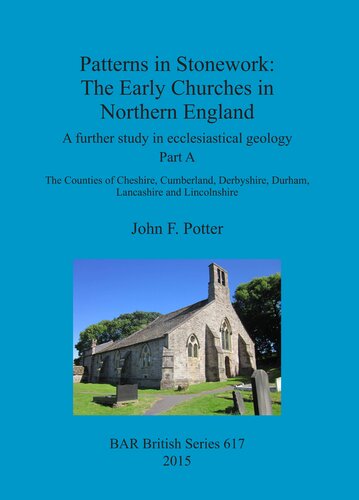

Most ebook files are in PDF format, so you can easily read them using various software such as Foxit Reader or directly on the Google Chrome browser.
Some ebook files are released by publishers in other formats such as .awz, .mobi, .epub, .fb2, etc. You may need to install specific software to read these formats on mobile/PC, such as Calibre.
Please read the tutorial at this link: https://ebookbell.com/faq
We offer FREE conversion to the popular formats you request; however, this may take some time. Therefore, right after payment, please email us, and we will try to provide the service as quickly as possible.
For some exceptional file formats or broken links (if any), please refrain from opening any disputes. Instead, email us first, and we will try to assist within a maximum of 6 hours.
EbookBell Team

4.0
16 reviewsThis work follows the rapid survey of the ecclesiastical geology of the stonework of known Anglo-Saxon churches throughout England undertaken by the author a decade ago. From that brief study it proved possible to both understand and distinguish clearly obvious patterns in the use of the stonework. Furthermore, the use and value of specific rock types were determined and diagnostic features which could be used to identify buildings of the period were described. Subsequent, more widespread published studies in Scotland, Ireland and Wales, expanded the English studies by revealing closely analogous examples of the same indicative features. Beyond the domain of the Anglo-Saxons but, of the same pre-Romanesque age, a widespread building fashion had been followed and to this the name ‘Patterned’ was applied. Chapters 1 and 2 introduce and summarize this work and give brief details of the specific features that are diagnostic of this period. Although a number of relatively minor regional studies have been undertaken by the author in England, nothing had until this time been attempted for the North of England. The present work takes the same form as those studies for both Ireland and Wales. It provides a comprehensive analysis to cover all the early churches over an area of eleven North of England counties. Too large to be bound within one volume, the churches in these counties have been described in two volume parts, this being Part A. In this, the (pre-1974) counties involved are, in alphabetical order, Cheshire, Cumberland, Derbyshire, Durham, Lancashire and Lincolnshire; 79 churches or sites in all. This widespread regional study further endorses the existence of those distinctive patterned features in stonework fashions seen elsewhere. That building fashions changed in the past, if less dramatically, much as they do today, was further emphasised with stonework of Norman and later periods showing the same significant style changes as re-described here and noted in previous studies. This study, by county, drew attention to the dramatic differences that exist in the numbers of early churches that remain in existence today by geographical region. Consequential to this far-reaching study a variety of supplementary aspects of church construction are also discussed.